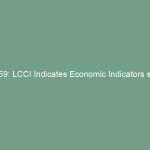Customer Feedback Forms: How To Get Started
Introduction
In today’s competitive business landscape, gathering feedback from customers has become crucial for the success and growth of any company. Customer feedback forms are powerful tools that enable businesses to understand their customers’ needs, preferences, and satisfaction levels. By collecting feedback, companies can identify areas for improvement, make data-driven decisions, and enhance customer experiences. This article will guide you through the process of getting started with sample customer feedback forms, providing valuable insights and practical tips along the way.
Why Customer Feedback Matters?
Customer feedback is a goldmine of information for businesses. It allows them to gain a deep understanding of their customers’ thoughts, opinions, and experiences. By actively listening to their customers, companies can identify pain points, uncover opportunities for innovation, and tailor their products or services to meet customer expectations. Customer feedback also plays a pivotal role in building customer loyalty, as it shows that a company values its customers’ opinions and is committed to continuous improvement.
Creating Effective Customer Feedback Forms
To effectively gather customer feedback, it is essential to design well-crafted and user-friendly feedback forms. Here are some key considerations for creating effective customer feedback forms:
1. Determine Your Objectives
Before diving into the design process, clearly define your objectives for collecting customer feedback. Are you looking to measure customer satisfaction, identify areas for improvement, or gauge interest in new products or features? Having a clear understanding of your goals will help you create targeted and relevant feedback forms.
2. Keep It Simple and Concise
When it comes to feedback forms, simplicity is key. Avoid overwhelming your customers with lengthy and complex forms. Keep the questions clear, concise, and easy to understand. Use straightforward language and avoid jargon or technical terms that might confuse respondents. Remember, the goal is to gather actionable feedback, and simplicity encourages higher response rates.
3. Use a Combination of Question Types
To gather comprehensive feedback, incorporate a mix of question types in your forms. This includes multiple-choice questions, rating scales, open-ended questions, and Likert scales. Each question type serves a different purpose and provides unique insights. By utilizing a combination of question types, you can collect both quantitative and qualitative data, enabling a more comprehensive analysis of the feedback.
4. Offer Incentives
To incentivize customers to provide feedback, consider offering rewards or incentives. This can be in the form of discounts, coupons, or entries into a prize draw. Incentives not only encourage higher response rates but also show appreciation for the time and effort customers invest in providing feedback.
5. Ensure Mobile-Friendly Design
With the increasing use of smartphones and tablets, it is crucial to optimize your feedback forms for mobile devices. Ensure that the forms are mobile-responsive and display correctly on various screen sizes. A mobile-friendly design enhances the user experience and allows customers to provide feedback conveniently, regardless of the device they are using.
6. Test and Refine
Before launching your customer feedback forms, conduct thorough testing to ensure they function properly and deliver a seamless user experience. Test the forms on different devices and browsers to identify and fix any issues. Additionally, seek feedback from a small group of customers or colleagues to gather insights and make necessary refinements before the wider release.
Conclusion
Customer feedback forms are invaluable tools for understanding customer needs, enhancing experiences, and driving business growth. By carefully designing user-friendly forms, setting clear objectives, and analyzing the collected feedback, businesses can gain actionable insights and make informed decisions. Remember to continuously refine and improve your feedback forms based on customer feedback itself. By actively engaging with customers and valuing their opinions, you can cultivate long-term relationships and create a customer-centric organization.
FAQs (Frequently Asked Questions)
Q: How can I encourage customers to fill out feedback forms?
A: There are several strategies you can employ to encourage customers to complete feedback forms. Firstly, clearly communicate the purpose and benefits of providing feedback. Highlight how their input can shape futureimprovements and enhance their own experiences. Additionally, consider offering incentives or rewards for participation. This can motivate customers to take the time to provide their feedback. Lastly, make the feedback process as convenient and user-friendly as possible by using mobile-friendly forms and minimizing the time and effort required to complete them.
Q: How should I analyze and interpret the feedback gathered?
A: Analyzing customer feedback requires a systematic approach. Start by categorizing the feedback based on themes or topics. Look for recurring patterns or trends that emerge from the responses. Quantitative data, such as ratings or rankings, can be analyzed using statistical techniques to identify significant insights. Qualitative data, such as open-ended responses, can be analyzed by coding and categorizing the comments. Look for common sentiments, suggestions, or complaints that can inform decision-making. It is also essential to track changes in feedback over time to assess the impact of any implemented improvements.
Q: How frequently should I collect customer feedback?
A: The frequency of collecting customer feedback depends on several factors, including the nature of your business, the product or service lifecycle, and the specific objectives you have set. It is recommended to establish a regular feedback collection cadence to gather consistent insights. This can be done through periodic surveys, feedback forms integrated into the customer journey, or ongoing feedback channels such as customer support interactions. Additionally, consider collecting feedback after significant updates or changes to your offerings to gauge customer reactions and identify areas for refinement.
Q: How can I ensure the privacy and confidentiality of customer feedback?
A: Respecting the privacy and confidentiality of customer feedback is crucial for building trust. Clearly communicate your privacy policy to customers, assuring them that their feedback will be treated confidentially and used solely for the intended purposes. Implement robust data security measures to protect customer information from unauthorized access or breaches. Consider anonymizing the feedback data during analysis and reporting to ensure individual responses remain confidential. Transparency and accountability in handling customer data are essential for maintaining trust and encouraging honest feedback.
Q: Can customer feedback forms be used for product development?
A: Absolutely! Customer feedback forms can provide valuable insights for product development. By soliciting feedback on existing products or services, you can identify pain points, desired features, and areas for improvement. This information can then be used to guide product enhancements or new product development. Involving customers in the feedback process not only fosters a sense of ownership but also increases the chances of creating offerings that align with customer needs and preferences.
Q: How do I ensure high response rates for my customer feedback forms?
A: To increase response rates for your feedback forms, there are several strategies you can employ. Firstly, keep the forms short, simple, and focused. Customers are more likely to complete a form that doesn’t require a significant time investment. Secondly, clearly communicate the purpose and benefits of providing feedback. Explain how their input will be used to improve their experiences. Thirdly, consider offering incentives or rewards for participation, such as discounts or entry into a prize draw. Lastly, follow up with gentle reminders or personalized messages to customers who haven’t yet completed the form. Persistence and proactive engagement can encourage higher response rates.










